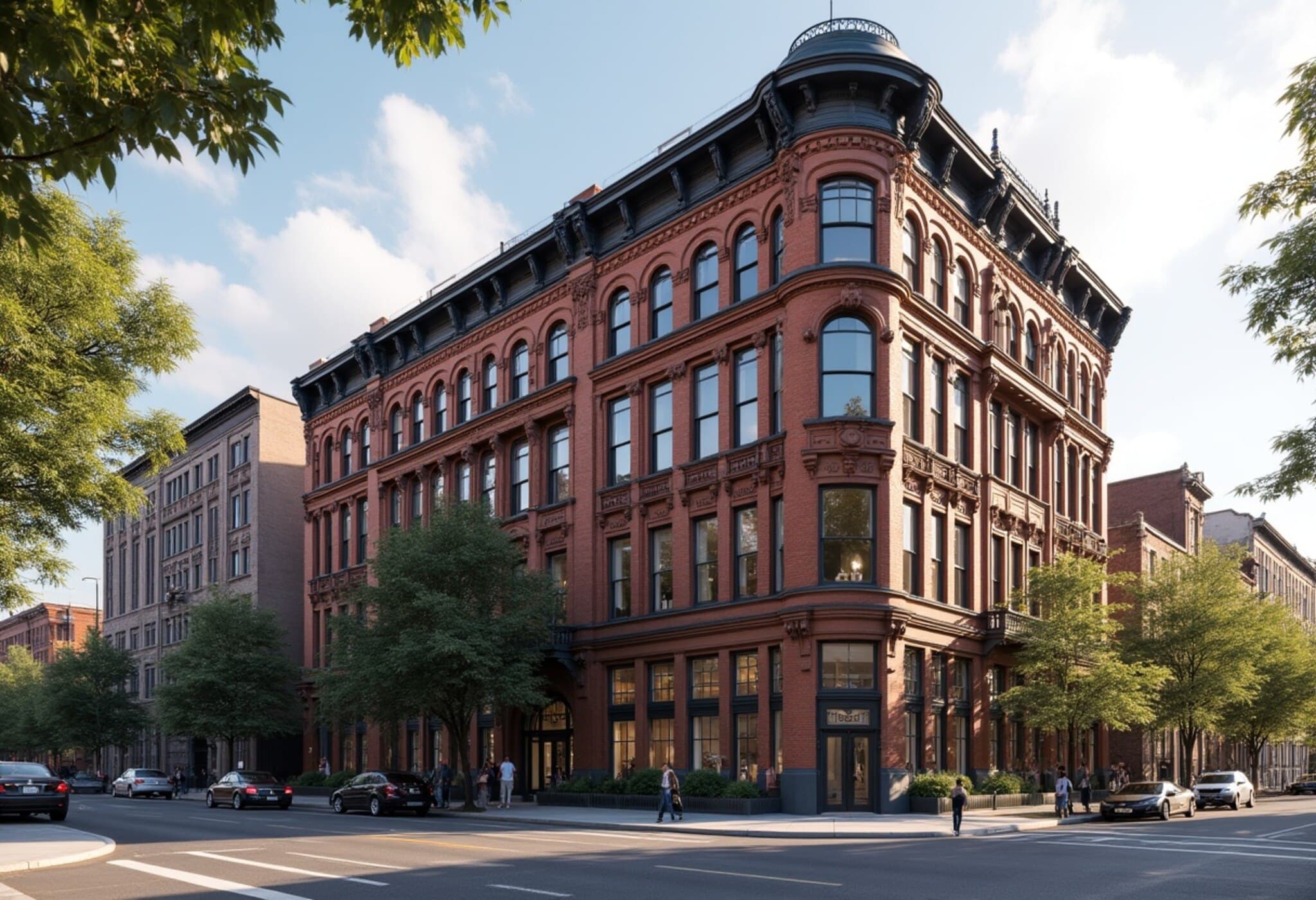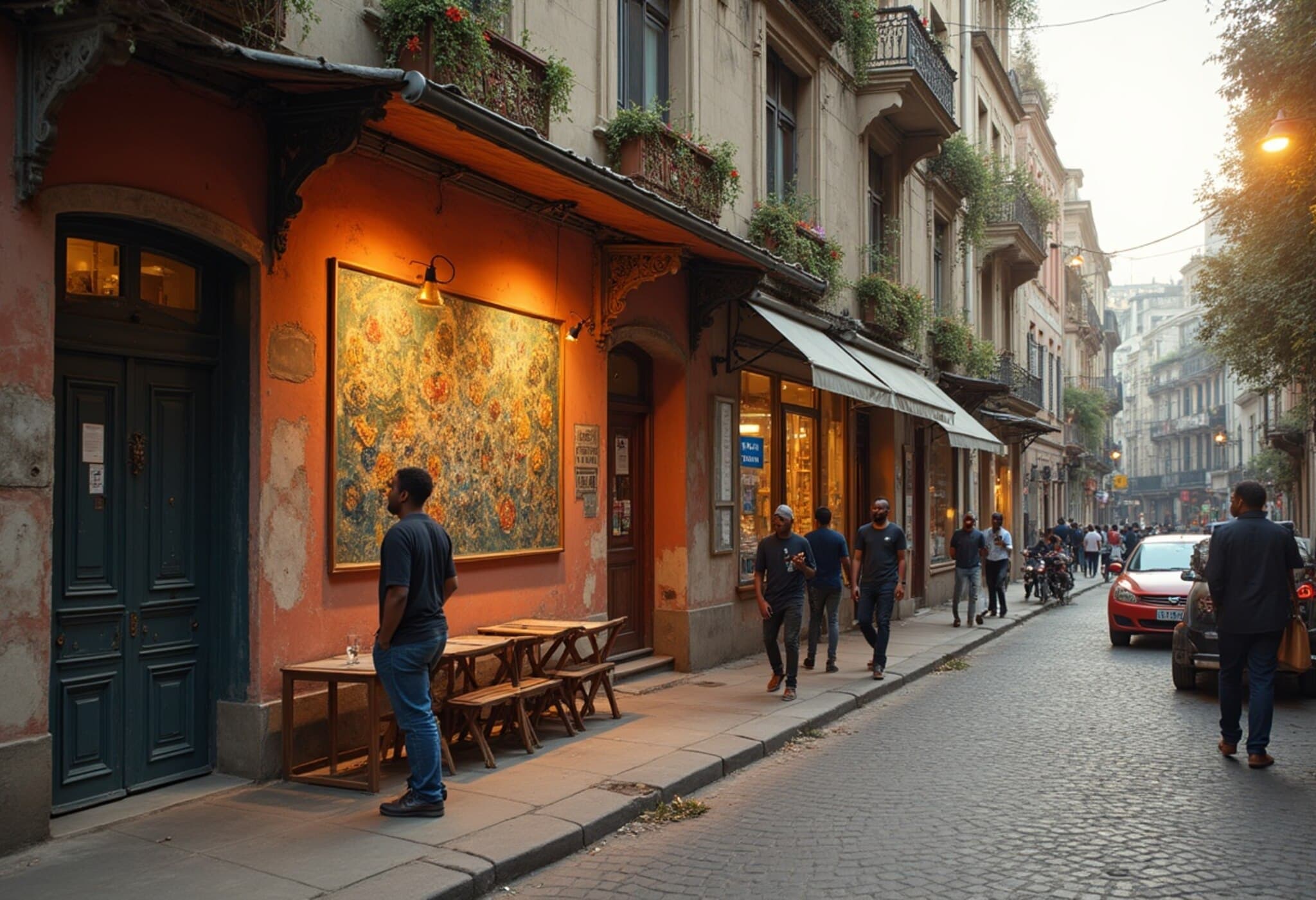From Neglect to Luxury: Breathing New Life Into a 19th-Century Brooklyn Landmark
In the heart of Bedford-Stuyvesant, Brooklyn, an ambitious $104 million redevelopment project has turned the long-abandoned St. John's College campus into a vibrant luxury apartment complex. What was once an emblem of academic history, left to decay since 1972, now stands as The Hartby, a 205-unit residential building that seamlessly blends the charm of 19th-century architecture with modern upscale living.
A Dream Rooted in Community
Matt Linde and Udi Kore, local entrepreneurs who grew up in the neighborhood, first stepped into the crumbling halls of the former college in 2017. The experience was eye-opening. "It looked like the perfect setting for a horror movie," recalls Linde—peeling paint, debris scattered on the floor, and birds nesting inside. Yet, beneath the neglect, the building held what they call "amazing bones," from soaring ceilings to grand arched windows, sparking a vision for restoration and revitalization.
Historic Context: The Legacy of St. John's College
Founded in 1869, the site witnessed multiple identities over the decades—from College of St. John the Baptist to St. John's University, before the institution relocated to Queens in the early 1970s. The adjoining Roman Catholic church continued using the structure for various community functions, but the college building itself fell into disrepair.
Innovative Preservation Meets Practical Development
Securing the property involved delicate negotiations. After acquiring a 99-year ground lease from the church, Linde and Kore committed to preserving the building’s historic integrity while ensuring its economic viability.
- Lease Details: 99-year term with potential for extension, reverting to the church thereafter.
- Financial Structuring: $72.1 million construction loan plus $31.5 million in private equity invested.
- Tax Arrangements: Property lots were split to allow the church to retain tax exemptions while the apartment building incurs standard property taxes (~$700,000 annually).
Modern Luxury Infused With Heritage
Renovations, commencing in 2020, included a newly constructed wing, an underground parking garage, and thoughtfully designed communal spaces. The Hartby offers 147 one-bedrooms, 48 studios, and 10 two-bedroom apartments.
Maintaining connections to its storied past, the developers preserved exposed brick walls and a chapel window, crafting a "winter garden" courtyard that links the building with the adjacent historic church. Amenities such as a gym, yoga room, business center, and a communal lounge cater to both comfort and lifestyle needs.
Affordable Housing Amidst Luxury
Recognizing the importance of inclusive community development, 62 of the units are priced as affordable housing through New York City's housing lottery system. Rents for these units range from $2,495 to $3,939 monthly, providing accessibility for middle-income families, while market-rate rents span $3,130 to $6,950.
Community Response and Future Outlook
Since opening leasing in April 2025, The Hartby has quickly gained traction, achieving 70% lease commitments and approximately 50% occupancy, with full occupancy projected by September. Local residents have expressed appreciation for the project's careful preservation of historical elements, while the church leadership has reported astonishment at the revitalization.
"They were in awe," Kore shares. "After decades of neglect, seeing the building preserved and reimagined reaffirmed its place as a treasured Brooklyn landmark." This project exemplifies how historic preservation can coexist with forward-thinking urban development.
Expert Perspective: Adaptive Reuse and Urban Renewal
From a policy and urban planning standpoint, The Hartby highlights critical trends in addressing housing shortages while conserving cultural heritage. Adaptive reuse projects like this reduce resource consumption compared to demolition and new builds, preserving community identity.
Furthermore, the public-private partnership model—with the church maintaining ownership and benefiting financially—demonstrates innovative stewardship for historic properties often at risk of abandonment. This approach can serve as a blueprint for similar neighborhoods grappling with aging infrastructure and affordable housing needs.
Conclusion: A Landmark Reborn
The transformation of St. John's College into The Hartby stands as a compelling narrative of resilience and vision. It raises important questions: How can cities balance heritage preservation with growth and affordability? What role should community stakeholders play in development projects? What lessons can be drawn for future urban revitalization efforts nationwide?
This Brooklyn story is more than bricks and mortar; it's a testament to honoring the past while embracing the future.
Editor's Note
The redevelopment of the historic St. John's College campus into The Hartby is a testament to how visionary development can rejuvenate neighborhoods while preserving their narratives. As urban centers across the U.S. face both housing crises and preservation challenges, this project invites policymakers and developers alike to consider adaptive reuse as a sustainable, community-conscious solution. Readers are encouraged to reflect on their own communities' hidden architectural gems and the untapped potential lying within.












